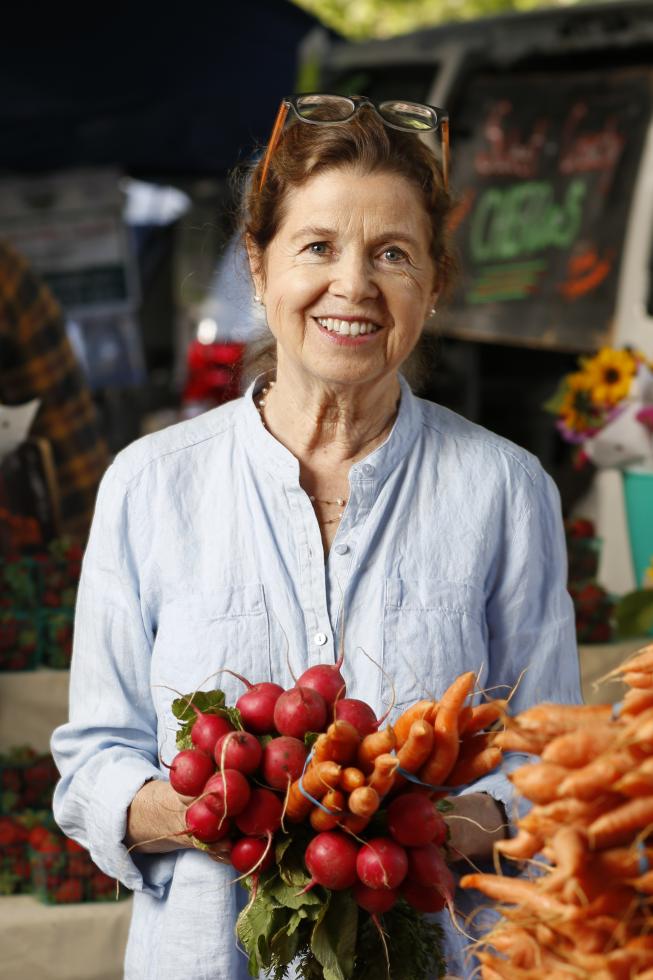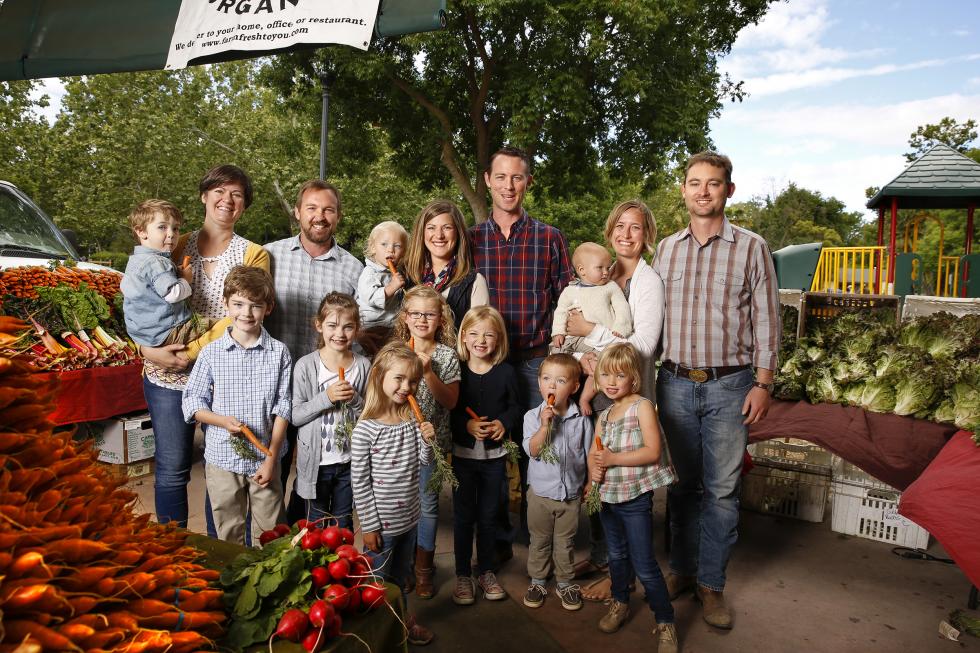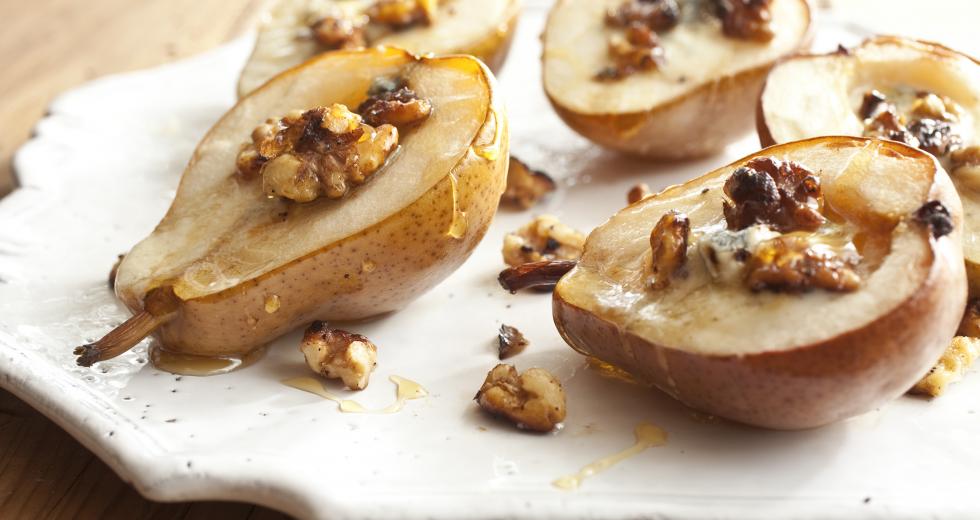The Davis Farmers Market was founded in 1976 by a group of residents that included Ann Evans, local author, publisher and consultant. She’s still involved with the market today and wants to inspire more people to shop and cook seasonally.
With this goal in mind, Evans wrote a revised, second edition of her 2012 book the Davis Farmers Market Cookbook to be released Nov. 1. The book will be sold at the local farmers market, bookstores in Davis and through Amazon. Profits from book sales will benefit the nonprofit Davis Farm to School program of the Davis Farmers Market Alliance. Comstock’s recently spoke with Evans about her cookbook (the interview has been edited for length and clarity).
How did the Davis Farmers Market cookbook come to be?
I’ve been involved with the Davis Farmers Market since the start, always representing the consumer point of view. I’m not a farmer, but both consumer and farmer are important. I’ve taken a leadership role throughout the years in the 40-year life of the market. … It felt absolutely necessary to me to get the Davis market its own cookbook. I wrote the first one with Georgeanne Brennan [Davis resident and James Beard Award-winning cookbook author] and it sold out in three years.
How is the Davis Farmers Market important to the history of our region?
It’s important to the history of markets in the state. Early on, this market was started before there were certified markets, [which sets standards allowing farmers to bring unpacked produce directly to consumers for sale]. Those were brought in under Jerry Brown’s first term as governor. Davis went ahead and formed its markets and did what was needed for small farmers to come to market. Davis was one of the first four markets in the state. Their leadership was instrumental.
Ann Evans is the author of the Davis Farmers Market Cookbook.
(Photo courtesy Craig Lee)

The Davis market came to be because so many of us worked in Sacramento [and understood the political system]. I represented the Department of Consumer Affairs, and one of us worked in the Department of Food and Agriculture. We knew the system, but we also really knew from the ground work that needed to be changed. Together that group and the consumer movement and those advocating on behalf of issues of hunger and social justice — many of the same issues that are in focus again today — worked to convince agriculture in California that we should give this a try. [California Department of Food and Agriculture]’s fear was the markets would become a dumping ground for seconds [also known as “ugly produce”]. Farmers markets are [now] regulated and inspected and there is universal support for farmers markets in California.
What’s new about this revised cookbook?
In addition to 21 new recipes, it keeps the basic structure of cooking by season, and then cooking in the order by which a meal is served (starting with appetizers, ending with desserts) and each season has [instructions] to preserve the season with canning recipes.
The focus has changed to next and second generation farmers at the market, which is now 40 years old. I have photos and bios of adult children who are now working with their parents. And I have bios of new farmers at the market.
It’s an equal focus on new consumers, on young people coming up through the schools and how can we reach them. Farm-to-school is part of the Davis market. We create an expectation that food can be fresh year-round for them, that the school can have it and the market can have it — the way it should be in California.
The Barnes-Barsotti family includes three brothers, their wives
and children, Capay Organic. The brothers’ parents, Marin Barnes
and the late Kathleen Barsotti, were market cofounders. (Photo
courtesy Craig Lee)

Can you clarify: How should food be in California?
California’s No. 1 industry is agriculture. We’re all proud of it. Many people work in it directly and indirectly. How does that translate into what’s on our table? Sustainable farmers are important for creating a healthy environment for us. We have a unique mediterranean climate. There’s no other place where you can get 400 varieties of specialty crops. That’s the trademark of California.
That’s why people come to California — in part for tourism, but its own people love and live the life of good food. This is why people love to go to France. Everyday, people are talking about food and celebrating it. Not just in schools. That’s what we want here for everyone. It’s part of everyone’s voting right.
That’s part of the reason I wanted to devote [the cookbook] to young consumers. They’re the future consumers, but they’re also the future farmers and voters. If we have voters that understand and appreciate the value of agriculture to them, then they understand how to vote for the long-term stewardship of agriculture in California and the investment that takes.
What if folks are shopping at Sacramento or Placer County farmers markets? Will this book be relevant to them?
Absolutely. We basically live in the same seasons.
What recipes from the book are you making now?
I’m canning olives right now. I went fishing this summer, so I have a lot of fish in the freezer and just last night I made some fish curry. I’m also making chutney. I have a fall chutney, but I substitute quince for apples. The sweet potato pie this time of year is unbelievable. I love sugar pumpkins, but sweet potatoes are a nice change with a little bit of orange juice.
Do you have any tips for folks trying to eat more food from their local markets?
First, you need to go to your local market. The produce does the best job of selling itself. The colors are so vibrant. As the seasons change, the colors change. Right now we have the purples and oranges and the dark, dark green. Let your senses be your guide. Second of all, if you’re unsure about what to do, ask the farmer. They’re cooking all the time with the produce they bring to market and will have simple ideas. In the book, I have eight basic recipes to help you keep it simple. You can rotate through the seasons with these basic recipes. They’re not overly complicated. People are busy, but it doesn’t have to be complicated to cook with fresh produce. In California, when in doubt, make a salad!



